
CRISPR poplar
Withour the insertion of additional genes, poplars were modified with CRISPR so that they flower after just four months instead of seven to ten years... >>MORE<<
Aus Sicht des Schutzes von Mensch und Umwelt ist das technische Potential der neuen Gentechnik und insbesondere der Anwendungen von CRISPR/Cas erschreckend. Das ist auch den ErfinderInnen dieser Technologie bewusst. So schreibt Jennifer Doudna, die viele Patente auf die CRISPR-Technologie angemeldet hat: „Angesichts der Tatsache, dass das Redigieren von Genen für unsere Spezies und unseren Planeten so radikale Folgen haben wird, war die Herstellung von Kommunikationsverbindungen zwischen Wissenschaft und Öffentlichkeit nie von so großer Bedeutung wie heute.“ (Doudna & Sternberg 2018: Eingriff in die Evolution)
Die hier aufgelisteten Beispiele dienen deswegen dazu, die Risiken der neuen Gentechnik anschaulich zu machen. Werden derartige Organismen nicht strikt reguliert, gefährdet ihre Freisetzung unsere Lebensgrundlagen und den Artenschutz.
Viele Akteure versuchen eine offene Diskussion über diese Risiken zu vermeiden. Dahinter stehen oft wirtschaftliche Interessen an Forschung, Entwicklung und Vermarktung entsprechender Produkte. Deswegen leisten wir hier einen Beitrag aus der Sicht des Schutzes von Mensch, Umwelt und Natur, basierend auf den verfügbaren wissenschaftlichen Informationen.
Die neuen Verfahren ermöglichen tiefgreifende Veränderungen, auch ohne zusätzliche Gene einzufügen. In vielen Fällen resultieren daraus Veränderungen der biologischen Eigenschaften, z.B. der Inhaltsstoffe von Pflanzen, die weit über das hinausgehen, was mit den bisherigen Methoden der Züchtung erreicht werden konnte.
Anders als oft behauptet, können die neuen Gentechnikverfahren also nicht den herkömmlichen Züchtungsverfahren und auch nicht natürlicherweise auftretenden Mutationen gleichgesetzt werden. Bei Gen-Scheren wie CRISPR/Cas handelt es sich um biotechnologische Mutagene, mit deren Hilfe die natürlichen Mechanismen der Genregulation und Vererbung umgangen werden können. Diese Werkzeuge machen das Erbgut in viel größerem Umfang und in neuer Art und Weise für Veränderungen verfügbar. Die so erzielten Ergebnisse der genetischen Veränderung unterscheiden sich meist deutlich von denen ‚spontaner‘ oder ‚zufälliger‘ Mutationen.
In vielen Fällen verursachen die Verfahren der neuen Gentechnik auch spezifische unbeabsichtigte und unerwünschte Effekte. Dazu gehört die ungewollte Einfügung zusätzlicher Gene und Veränderungen des Erbgutes an der falschen Stelle.
In vielen Fällen wird die neue Technologie auch mit den Methoden der ‚alten‘ Gentechnik wie der ‚Gen-Kanone‘ kombiniert, was zu einer Vielzahl von zusätzlichen Risiken führt.
Die Herausforderungen für die Risikobewertung betreffen u.a. Umweltrisiken wie die Veränderung von Inhaltsstoffen von Pflanzen, die Auswirkungen auf die Nahrungsnetze oder auf die Interaktion und Kommunikation mit der Umwelt haben. Gentechnisch veränderte Organismen, die in der Umwelt überdauern und sich fortpflanzen können, sind mit einem besonders hohen Risiko verbunden.
Unsere Beispiele zeigen: die genetischen und biologischen Eigenschaften von Gentechnik-Organismen müssen in jedem Fall – und unter Einbeziehung der jeweiligen Verfahren – eingehend untersucht werden, bevor über die Sicherheit der Pflanzen entschieden wird. Auch kleinste Eingriffe ins Erbgut können erhebliche Auswirkungen haben.
Dass es im Bereich der Pflanzenzucht grundlegende Unterschiede zwischen konventioneller Züchtung, alter Gentechnik und neuer Gentechnik gibt, erklären wir auch ausführlich in unserer Videoserie „Was ist (keine) Gentechnik?“ sowie in der gleichnamigen Broschüre.
Unterstützt wird dieses Projekt insbesondere von:

From the perspective of health and environmental protection, the technical potential of new genetic engineering techniques, especially the applications of CRISPR/Cas, is alarming. This is even recognised by the inventors of the technology. For example, Jennifer Doudna, who has filed many patents for CRISPR technology, writes: "Given how radical the implications of gene editing are for our species and our planet, opening the lines of communication between science and the public has never been more essential than it is now." (Doudna & Sternberg “A Crack in Creation”, 2017)
Therefore, the examples listed here aim to illustrate the risks associated with new genetic engineering technology (also called “new genomic techniques”). If genome edited organisms are not strictly regulated, their release has the potential to endanger biodiversity and our livelihoods (see report Genetic engineering endangers the protection of species). Many stakeholders are openly seeking to avoid any open discussion regarding these risks. Frequently, this is because of their economic interests in the research, development and marketing of genome-edited products. Our aim here is to call attention to the possible impacts on humans, nature and the environment, based on the available scientific information.
The new techniques enable profound changes in the genome, even without the insertion of additional genes. In many cases, changes in biological properties are the result, e.g. changed composition of plants that goes far beyond what could be achieved with previous breeding methods.
Contrary to what is often claimed, the new genomic techniques cannot be put on the same level as conventional breeding methods or naturally occurring mutations. Gene scissors, such as CRISPR/Cas, are biotechnological mutagens that can be used to bypass the natural mechanisms of gene regulation and inheritance. They make the genome accessible for changes in a new and much more profound way. The resulting genetic changes typically differ significantly from those of 'spontaneous' or 'random' mutations. Furthermore, in many cases the new genetic engineering techniques also cause specific unintended and undesirable effects. Examples are the unintentional insertion of additional genes and changes in the genome at the wrong location.
In addition, the new technology is also frequently combined with ‘old’ genetic engineering methods, such as the 'gene cannon'. They are used to insert the ‘gene scissors’ into the genome of the target organism, causing a multitude of additional risks.
Moreover, it poses major challenges in environmental risk assessment, e.g. changes in the composition of plants, which may have an impact on the food web or on interaction and communication with the environment. Genetically engineered organisms that can persist and reproduce in the environment are another high level risk.
Our examples show that the genetic and biological characteristics of genome edited organisms must be thoroughly examined case-by-case, taking into account the specific techniques used before a decision on their safety can be made. Even tiny interventions in genetic make-up can have huge effects.
In our videos and brochure “What is (not) genetic engineering?” we explain the fundamental differences between conventional breeding and 'old' and 'new' genetic engineering in plant breeding.


Withour the insertion of additional genes, poplars were modified with CRISPR so that they flower after just four months instead of seven to ten years... >>MORE<<

The company, Pairwise, is seeking to market mustard greens as salad leaves in the USA. CRISPR/Cas was used in the plants to genetically engineer 17 genes at the same time in order to make the leaves taste less pungent. A patent application has already been filed... >>MORE<<

To create wheat that contains less acrylamide, a gene was switched off using CRISPR. This also weakened growth and germination... >>MORE<<
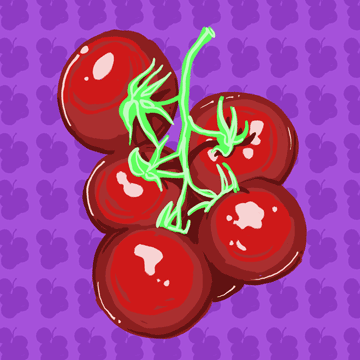
Using CRISPR, the size, shape and ingredients of wild tomatoes were changed in just a few steps and within a short time... >>MORE<<

Using CRISPR, rapeseed has been modified in a way that it loses fewer grains before harvest. The unintended changes only became apparent when the entire genome was analyzed... >>MORE<<
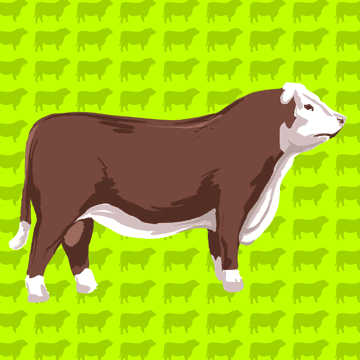
It is often claimed that genetic engineering is necessary to help agriculture adapt to climate change. But many traits relevant to this, such as shorter hair in cattle, have also already been produced with conventional breeding... >>MORE<<

CRISPR/Cas genetic scissors used in zebrafish to investigate unintended changes in the genome. It appears that these changes can be very specific... >>MORE<<

CRISPR/Cas genetic scissors were used to modify rice for smaller growth and higher yield. However, it appears that the genetic scissors are often not as precise as many claim… >>MORE<<
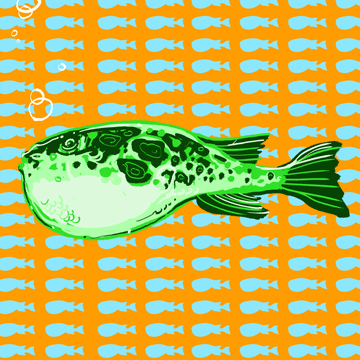
In order to make them gain more weight, pufferfish had been diseased by using the gene-scissor CRISPR/Cas. In Japan they are approved for consumption… >>MORE<<

Experiments with CRISPR/Cas in Japan resulted in tomatoes with a much higher GABA content. In many species, GABA has an important biological function. In humans, however, it can lower blood pressure and act as a relaxant... >>MORE<<
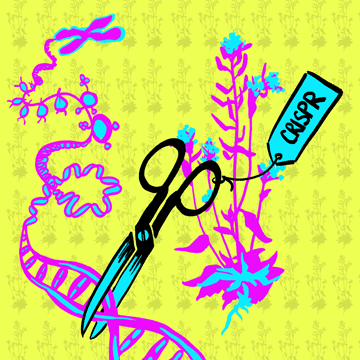
New Genetic Engineering overrides natural mechanisms of genome organisation and gene regulation... >>MORE<<
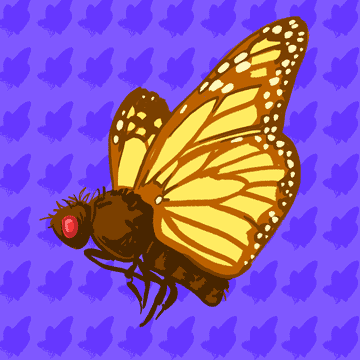
Just three tiny changes in the individual base pairs of a gene can make fruit flies resistant to toxins produced by specific plants. As a result, they can absorb the poison and become toxic to their predators… >>MORE<<
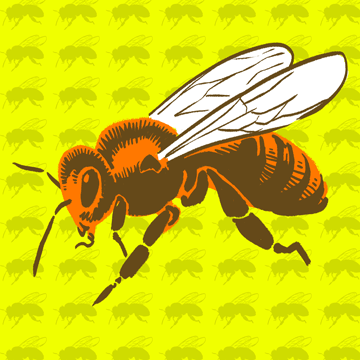
Honey bees play an essential role as pollinators in intact ecosystems. However, the survival of honey bee colonies is under increased threat due to industrialised agriculture. Genetic engineering is now promising a solution... >>MORE<<
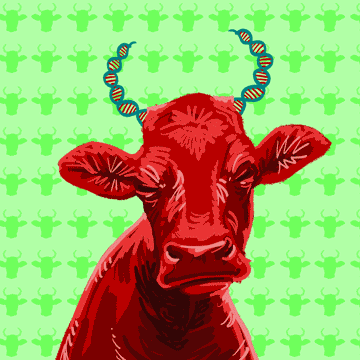
Cattle were genetically engineered with gene scissors to prevent the growth of horns. Several years later, researchers found complete DNA sequences conferring antibiotic resistance in the genomes of the cattle… >>MORE<<

In Japan, Red Seabream has been genetically engineered in order to grow bigger and heavier. In this way profits should be increased. But the costs will be paid by the fish… >>MORE<<

CRISPR/Cas gene scissors were used to alter 18 sites on the genome of camelina. In the US, these plants are already deregulated even though they are able to persist and propagate in the environment, and might also cross into natural populations… >>MORE<<

New methods of genetic engineering are being used to produce animals with enhanced muscle growth to produce more meat. What sounds like a dream come true for industrial food production is a nightmare for the animals… >>MORE<<

Mushrooms created using new genetic engineering methods have been authorised for marketing in the USA without being assessed. The reason: genes were "only" removed and none added… >>MORE<<
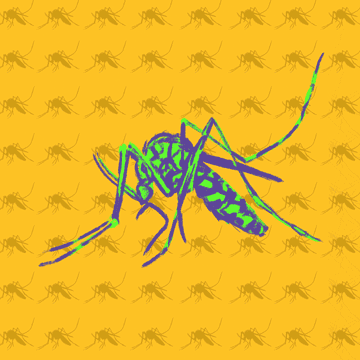
Gene-drives are, in particular, intended to alter wild species, whereby the application is purposely not restricted to the field or the laboratory. There are currently ongoing discussions about whether such methods should be used in insects, wild life animal species or weedy plant species… >>MORE<<

Forest trees such as poplars are also being genetically engineered. The problem: there is no way of implementing reliable risk assessment because forest trees have various and complex interactions with the environment… >>MORE<<
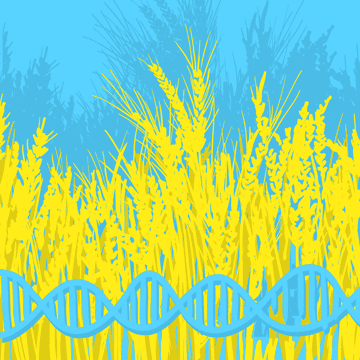
The wheat genome is huge. The use of gene scissors such as CRISPR/Cas on the wheat genome therefore creates specific patterns of genetic modification that are often unique and cannot be achieved with conventional breeding... >>MORE<<

The aim in the genetic engineering of corals using CRISPR is ostensibly to strengthen their adaptability to climate change and increased temperatures. However, corals are complex organisms and rely on a symbiosis with microorganisms... >> MORE <<